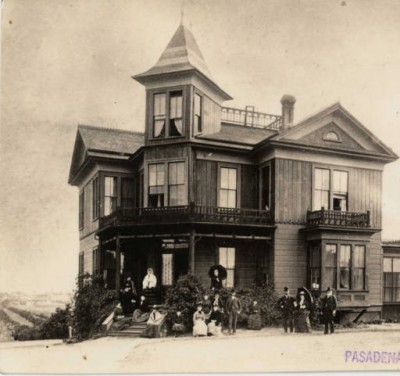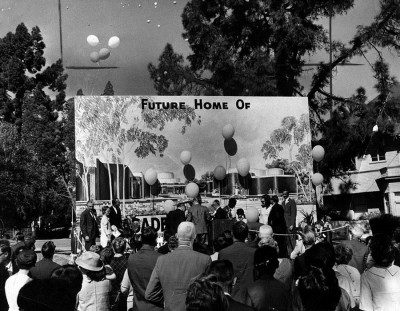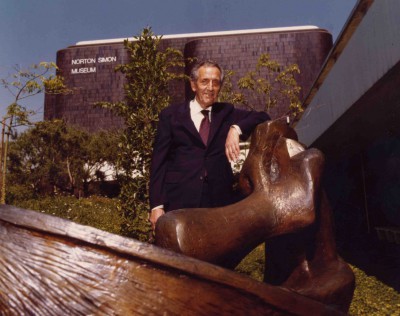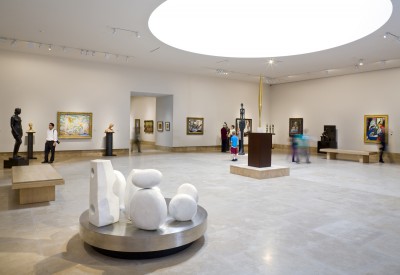Museum History
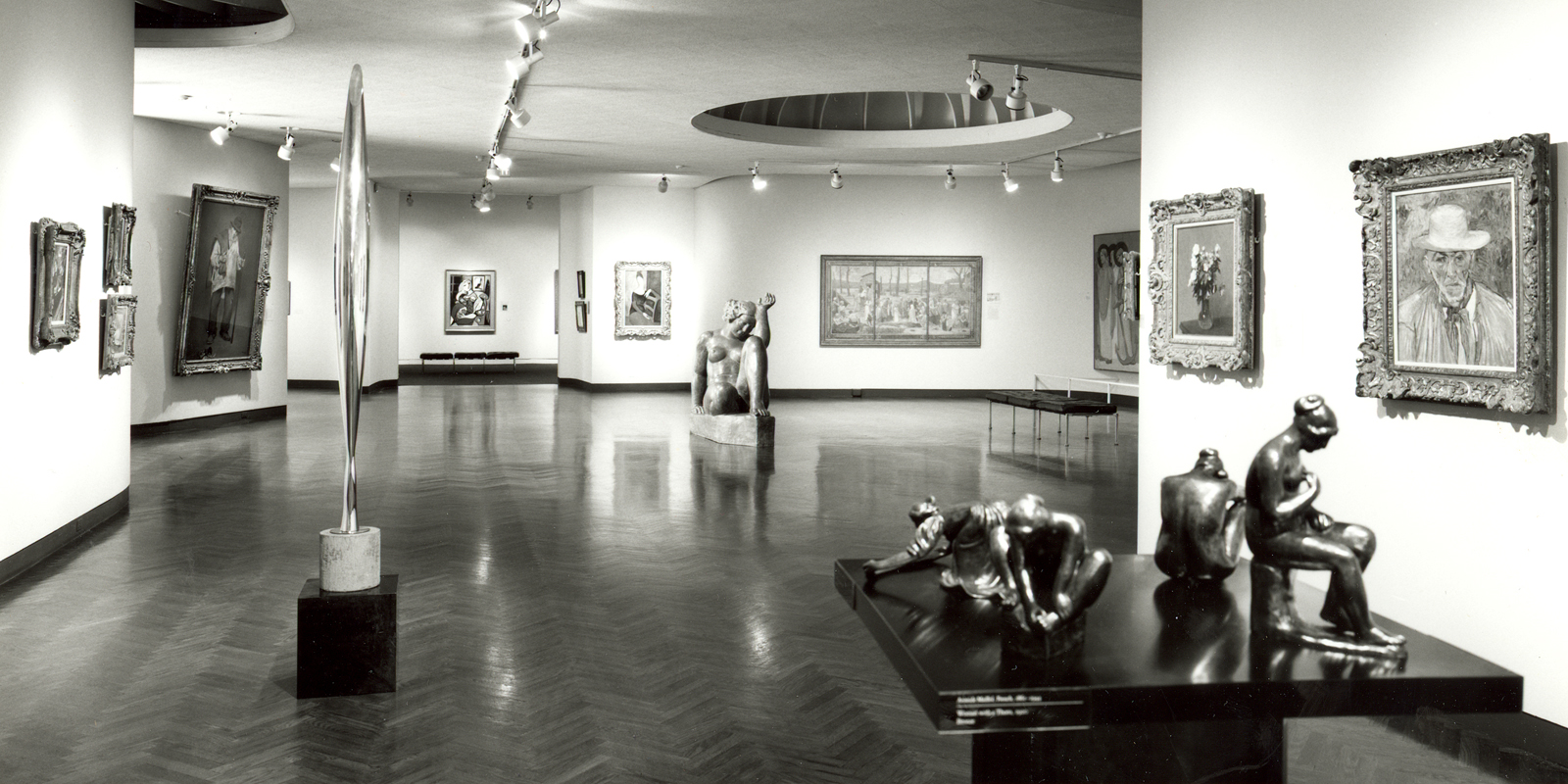
The history of the Norton Simon Museum begins with the Pasadena Art Institute. The Institute was founded in 1922 and incorporated two years later on August 14, 1924 as a privately endowed, nonprofit institution. Originally comprised of local citizens, the primary goals of the Institution were to establish and maintain a museum and library of art as well as encourage the study of fine arts. After incorporation, the Institute secured 9.5 acres of land and a 22-room Victorian house (the Reed mansion) in Carmelita Park at the corner of Orange Grove and Colorado boulevard in Pasadena. Initially, the Institute exhibited 19th century American and European art and hosted annual shows of California artists and works from other cultures. While the Pasadena Art Institute hoped to provide a future site for a new building, it focused on the important business of saving Carmelita as a public park. Throughout the Great Depression, the staff and trustees managed to pay for the upkeep of the property by selling grandstand seats for Pasadena's Tournament of Roses Parade.
In 1941, the City of Pasadena received Carmelita Park as a gift. A provision of the endowment called for an adequate parcel to be retained for the Pasadena Art Institute. Subsequently, the Institute reached an agreement with the City of Pasadena. It leased the property to the Institute without cost for 20 years, under the condition that a permanent museum be constructed on the site.
In April 1942, the Institute merged with the one-year-old Pasadena Museum of Art. Retaining the name of Pasadena Art Institute, it established its headquarters in one of the galleries of the Grace Nicholson Studios, located at 46 North Los Robles Avenue, Grace Nicholson’s Chinese House and Emporium is now the home of the Pacific Asia Museum. In 1943, the Museum, with the assistance of a small group of citizens, paid off the mortgage. Miss Nicholson then deeded the studios to the City of Pasadena, who then leased the building back to the Museum at no cost for 25 years. This transaction also stipulated a museum be built on the Carmelita property. In 1948, Miss Nicholson died, bequeathing the Institute more than $40,000 in unrestricted funds.
A pivotal point in the history of the Pasadena Art Institute came in 1953, when it received a bequest of almost 500 artworks from the estate of Galka E. Scheyer. Galka Scheyer represented the artists Kandinsky, Klee, Jawlensky and Feininger, among others. The gift not only included art works but her archive of correspondence with the artists. Announcing the gift, the Institute stated that the gift made it “one of the richest institutions in the world in this aspect of modern art.” A year later, in April, 1954, the Institute changed its name to the Pasadena Art Museum and concentrated its efforts on the acquisition and exhibition of modern art.
Over the next two decades the Pasadena Art Museum earned an international reputation for organizing and presenting critically acclaimed exhibitions of 20th century art. They presented the first retrospective of the work of Marcel Duchamp (with Duchamp attending), exhibitions of Andy Warhol, Claes Oldenburg, Joseph Cornell, a landmark Bauhaus exhibition, and many others.
In 1964, the Museum decided to expand its programs. It commissioned the Pasadena-based architectural firm of Ladd & Kelsey to design a new 85,000-square-foot structure on the original Carmelita Park site. On November 24, 1969, the new Pasadena Art Museum opened. Purchases and donations of modern art included works by Larry Bell, Richard Diebenkorn, Ellsworth Kelly, Roy Lichtenstein, Claes Oldenburg, Ed Ruscha, Frank Stella and Andy Warhol.
To reflect its exhibiting and educational mission, the Museum again changed its name. On March 1, 1973 it became the “Pasadena Museum of Modern Art.” Unfortunately, debts incurred during the new Museum construction were a persistent and insurmountable burden. After several years of unsuccessfully trying to solve the Museum’s monetary problems, and faced with the prospect of bankruptcy and closure, the Trustees, in 1974, reached an agreement with Norton Simon.
Simon assumed management of the institution in exchange for taking on the Museum’s financial obligations. This second pivotal event in the life of the Museum significantly changed its identity, and direction. The Institution's name temporarily reverted back to the Pasadena Art Museum.
On June 24, 1974 the Museum closed for renovation. After combining the Pasadena Art Museum and Norton Simon collections, it reopened on March 1, 1975. In October of that year, the name of the institution changed to the Norton Simon Museum of Art at Pasadena.
Simon stated that while a Museum should be a place in which major art is constantly on view; it should also be used for teaching, seeing, and for formal and informal education. “Because for me,” he said, “the respect for what art is all about comes out of looking more than reading, more than formal instruction.”
Norton Simon died on June 2, 1993. As a tribute to her husband, Jennifer Jones Simon oversaw the major renovation of the interior galleries from 1996-1999 by the noted architect Frank O. Gehry. The sculpture garden was remodeled by Nancy Goslee Power, and the renovation completed in 2000 when the Museum's Theater was remodeled by Arthur Gensler, Jr. & Associates.
In 1999, the Museum Board significantly increased Museum hours and added events that directly related to the institution's holdings. In a marriage between past and present, the Museum collaborated with other local institutions to mount an exhibition entitled Radical Past: Contemporary Art & Music in Pasadena, 1960-1974.
The Norton Simon Museum continues to hold true to its namesake’s vision while organizing exhibits that demonstrate the richness and history of the collections. We invite you to visit and enjoy the treasures that have inspired many throughout the centuries.
